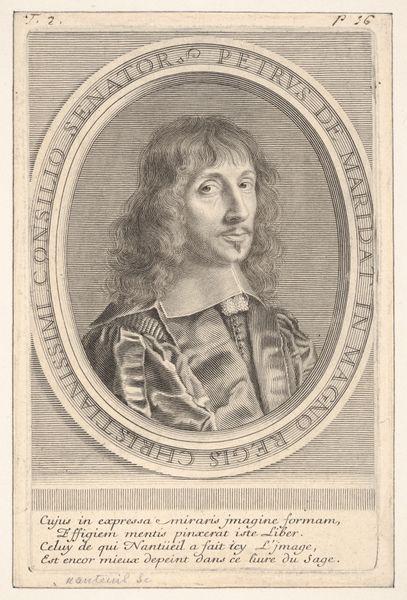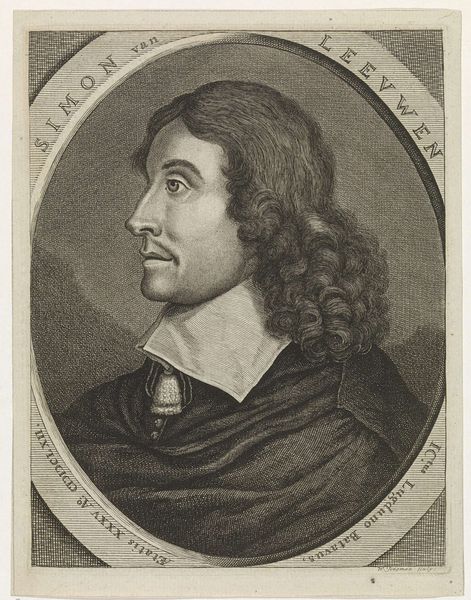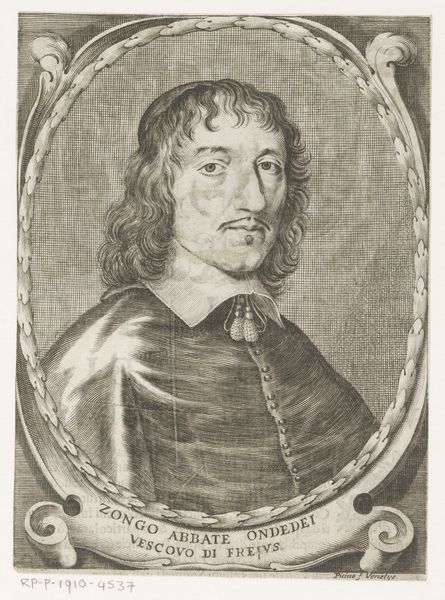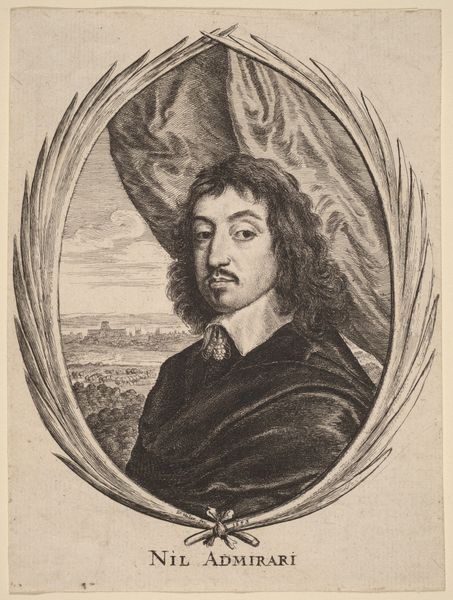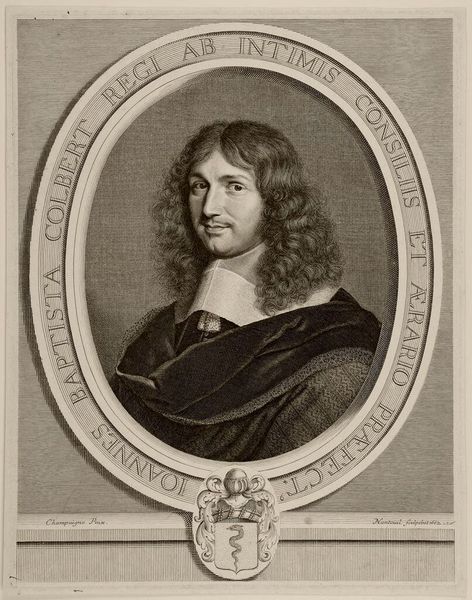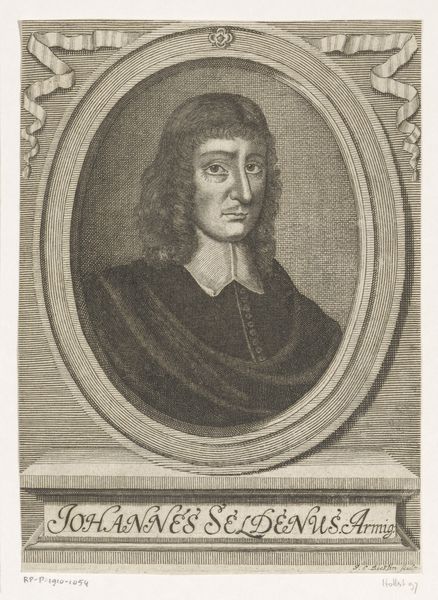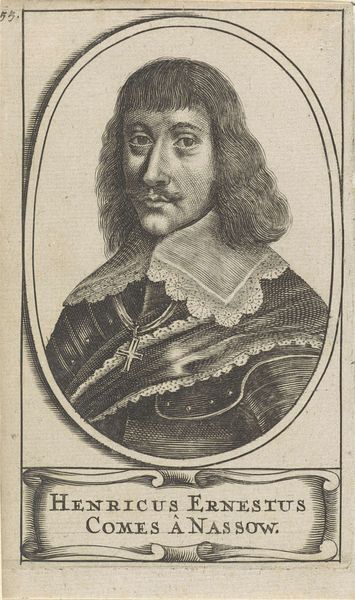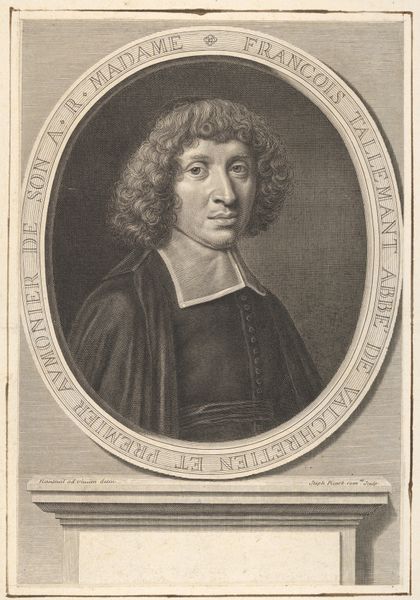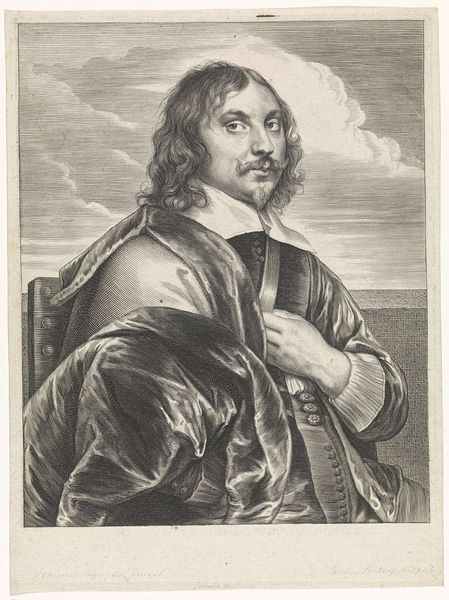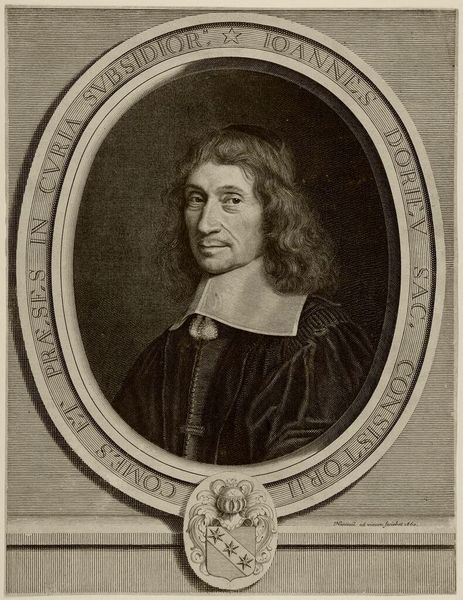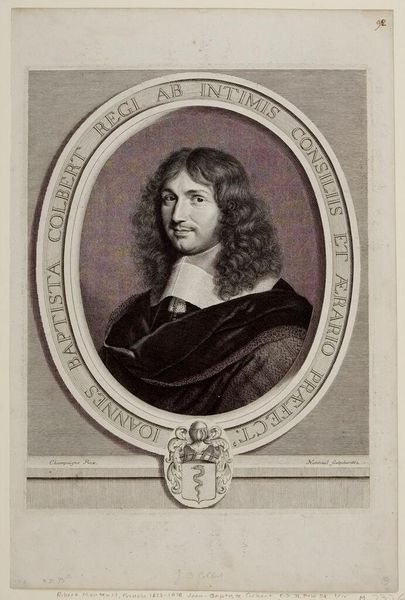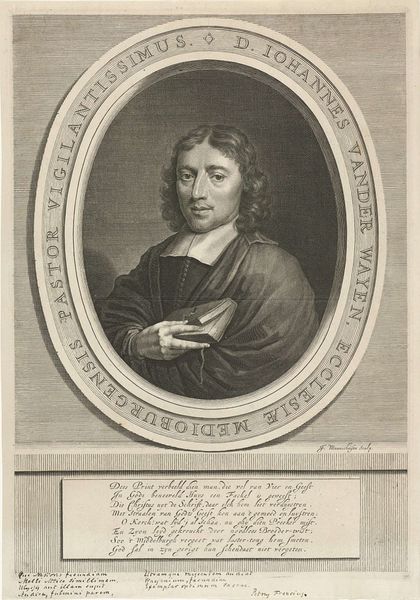
print, engraving
portrait
baroque
figuration
historical photography
framed image
line
engraving
Dimensions: height 370 mm, width 280 mm
Copyright: Rijks Museum: Open Domain
Editor: Here we have Hendrik Bary's "Portret van Thadaeus de Lantman," dating somewhere between 1657 and 1707. It's a print, an engraving, actually, and what strikes me is the sheer labor involved in creating all that detail. What's your take on this piece? Curator: The fascinating element here is Bary's utilization of printmaking, particularly engraving, to democratize portraiture. Before mass reproduction, portraits were exclusive to the wealthy. Bary, through his process and labor, provided a means for a broader audience to access and consume images of prominent individuals. It begs the question: how did the relatively accessible medium impact the perceived value and social function of the portrait itself? Editor: So, it's not just about the likeness of the man, Thadaeus, but also about who could own that likeness. The material—the engraving—changed everything? Curator: Precisely! Think about the implications for consumption and the distribution of power. An engraving allows for multiple impressions, making the image less unique and exclusive, thus altering its market value and accessibility. And, we should examine the workshop and the training required. What skills and division of labor are necessary to create such a print? Editor: It makes you wonder about the status of the printmaker themselves. Were they considered artisans, or artists in their own right? Curator: An excellent point! The labor, the repetitive act of engraving, often placed them in a different category than painters, despite their vital role in disseminating visual information. The "Portrait of Thadaeus de Lantman" is both a representation and a material object produced within a complex social and economic structure. Editor: I hadn't considered all the work that went into creating access. Thanks, I’ll definitely think about printmaking differently now. Curator: My pleasure. Remembering to investigate the means of production reveals another layer of art history beyond just style or biography.
Comments
No comments
Be the first to comment and join the conversation on the ultimate creative platform.
